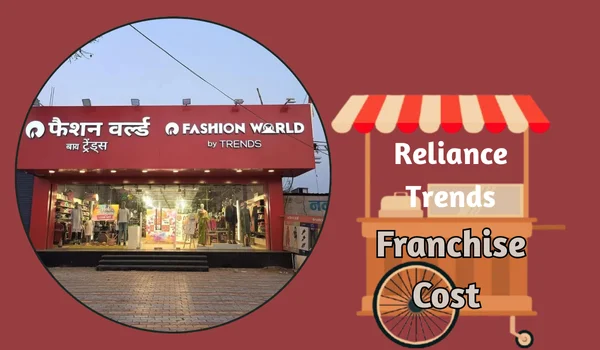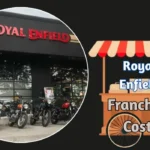If you want to step into organised fashion retail in India, Reliance Trends (part of Reliance Retail) is one of the fastest paths: strong brand recall, national supply chain, frequent promotions and a mass-market fashion assortment that works across city tiers. Below is a practical, advisor-style guide that covers likely investment bands, business models, realistic ROI expectations, who qualifies, and the step-by-step process to apply — plus the caveats you must check before committing.
Short context: Reliance Retail has publicly signalled an expansion via franchise routes for some fashion formats, and Reliance Trends / “Fashion World by Trends” is being offered in select markets through franchise or lease models. Always get the brand’s current commercial sheet for your city.
What is the Reliance Trends franchise model?
Reliance Trends is the mass-market fashion arm of Reliance Retail. Historically many of its larger store openings were company-owned, but Reliance has been opening up certain formats (including Fashion World / Trends) to franchise / FOFO (Franchise Owned Franchise Operated) and leasing partnerships to scale quickly in new cities and micro markets. Franchise formats offered in the market range from compact speciality stores to larger family apparel stores or multi-category formats.
Typical formats you’ll see in franchise offers:
- Compact / Speciality store (apparel or footwear): 800–1,500+ sq ft (lower capex).
- Family store / full Trends store: 2,000–3,000+ sq ft (larger format — higher capex and inventory).
- Mall kiosks / shop-in-shop (where applicable): lowest capex, but limited assortment.
Franchise cost — realistic investment bands

Public franchise listings and marketplace aggregators show a wide range of investment numbers depending on format and city. Use these only as directional benchmarks — Reliance’s official BOQ/LOI is the source of truth.
Indicative ranges found in public franchise listings:
- Compact / speciality store: ₹25–45 lakh (fit-out, initial inventory, working capital).
- Family store (2,000–3,000 sq ft): ₹50–75 lakh (higher inventory depth, larger interiors).
- Franchise / brand fee: many third-party listings show zero to moderate brand fee, as Reliance can structure deals as lease + revenue share or FOFO. Expect the commercial to include security deposits, inventory funding norms, and a possible revenue/marketing levy rather than a simple fixed royalty in some cases.
Key cost heads you’ll budget for:
- Rent + deposit (often the largest recurring cost)
- Store fit-out & interiors to brand BOQ
- Initial merchandise (inventory) — the bulk of capex for fashion retail
- POS, store IT, signage, lighting, trial rooms, racks, mannequins
- Working capital (payroll, CAM, marketing for first 3–6 months)
Revenue model & ROI expectations
Business mechanics
- You buy inventory (or get inventory on supply terms defined by Reliance), sell at national price architecture, and remit agreed receivables or revenue share to the brand depending on the agreement. The advantage is national promotions + brand pull; downside is margin compression if rent or inventory turns are poor.
Typical ROI signals
- Public franchise dashboards and consultants cite projected ROI in the 30–40% bracket for well-located family stores or faster payback (12–24 months) in high-volume locations; compact formats will have longer paybacks if footfall is low. These are market estimates — verify with Reliance and peer franchisees.
What drives your profitability
- Sales density (sales per sq ft) — critical KPI
- Inventory turns — faster turns reduce working capital needs
- Rent-to-sales ratio — target <10–12% where possible for good margins
- Local marketing & staff productivity (conversion, average transaction value)
Eligibility Criteria (who Reliance typically looks for)
Reliance’s public franchise calls and franchising partners look for:
- Financial capacity: Proof of funds for the capex and 3–6 months of working capital; bank statements and net worth proof.
- Property / site ownership or long-term lease: Ideally a prime high-street or mall location with required frontage and floor area. Reliance often prefers to evaluate specific sites before offering terms.
- Retail operating experience: Experience in multi-category retail or a demonstrated ability to manage people, inventory and promotions is preferred. Reliance targets partners with local market knowledge and execution focus.
- Compliance & governance: Ability to meet KYC, statutory registrations (GST, Shops Act, trade license) and follow the brand’s SOPs, reporting and audits.
Steps to apply — practical checklist
- Initial research & format selection
- Decide which format (compact, family store, kiosk) fits your budget and the property you can secure. Check Reliance trends store size norms on the corporate site.
- Contact Reliance Retail franchise team / authorised partner
- Use the official Reliance Retail / Trends contact channels or the franchise enquiries announced via franchising partners. Some Reliance fashion rollouts are managed with franchise consultants — look for announcements on Reliance Retail’s site.
- Share property & promoter details
- Exact address, carpet area, frontage, landlord details, and promoter profile + financial statements.
- Site evaluation & feasibility
- Reliance will run a catchment & trade area study. Expect queries on projected footfall, neighbouring brands, and competition.
- Commercials & LOI
- Insist on a written LOI/term sheet listing capex sub-heads, any franchise/brand fee, security deposit, revenue share (if any), commercial KPIs and the agreement term.
- Agreement, fit-out & training
- Once signed, follow the brand’s BOQ for store fit-out, attend brand training on merchandising and POS, and complete onboarding.
- Launch & operations
- Use national promotions, loyalty programs and local marketing to drive early traction. Track weekly sales density and stock turns aggressively.
Final advisor tips & cautions
- Get the official BOQ & sample city P&L — third-party portals vary widely; the brand’s LOI is authoritative.
- Prioritise location and inventory turn over a “cheap fit-out” — fashion retail is a volume game.
- Negotiate rent & CAM caps where possible; high CAMs can kill margins even with strong sales.
- Ask for peer references — speak to existing Reliance franchisees in the region for real sales/supply pain points.
- Model low/medium/high sales scenarios and stress test cashflows for at least 12 months.
Quick summary table
| Item | Indicative |
| Investment (compact) | ₹25–45 lakh. |
| Investment (family store) | ₹50–75 lakh. |
| Store size | 800–3,000+ sq ft (format dependent). |
| ROI / Payback | Target 12–36 months (location dependent). |
| How to apply | Contact Reliance Retail franchise team / authorised partner; submit site & promoter details; get LOI. |

Shashi Kant is the Founder and Editor of BusinessScroller.com, a leading platform for business insights, finance trends, and industry analysis. With a passion for journalism and expertise in business reporting, he curates well-researched content on market strategies, startups, and corporate success stories. His vision is to provide valuable information that empowers entrepreneurs and professionals. Under his leadership, BusinessScroller.com has grown into a trusted source for in-depth articles, customer care guides, and financial expertise.



Can we connect on call want to discuss
There is a plot of size 40 feet x 60 feet on the main road in BHALKI town, Taluka: Bhalki, District:Bidar in Karnataka state. I want to construct it as per the requirements of Reliance for operating or renting it to the TRENDS brand. If you are interested, we can meet. Please communicate the date & venue or by phone